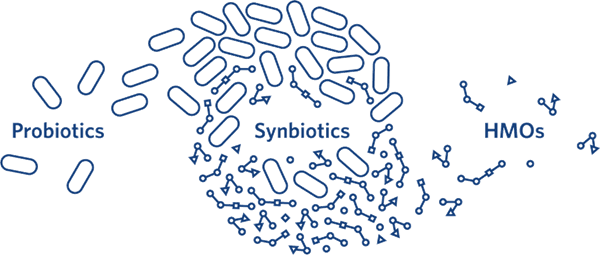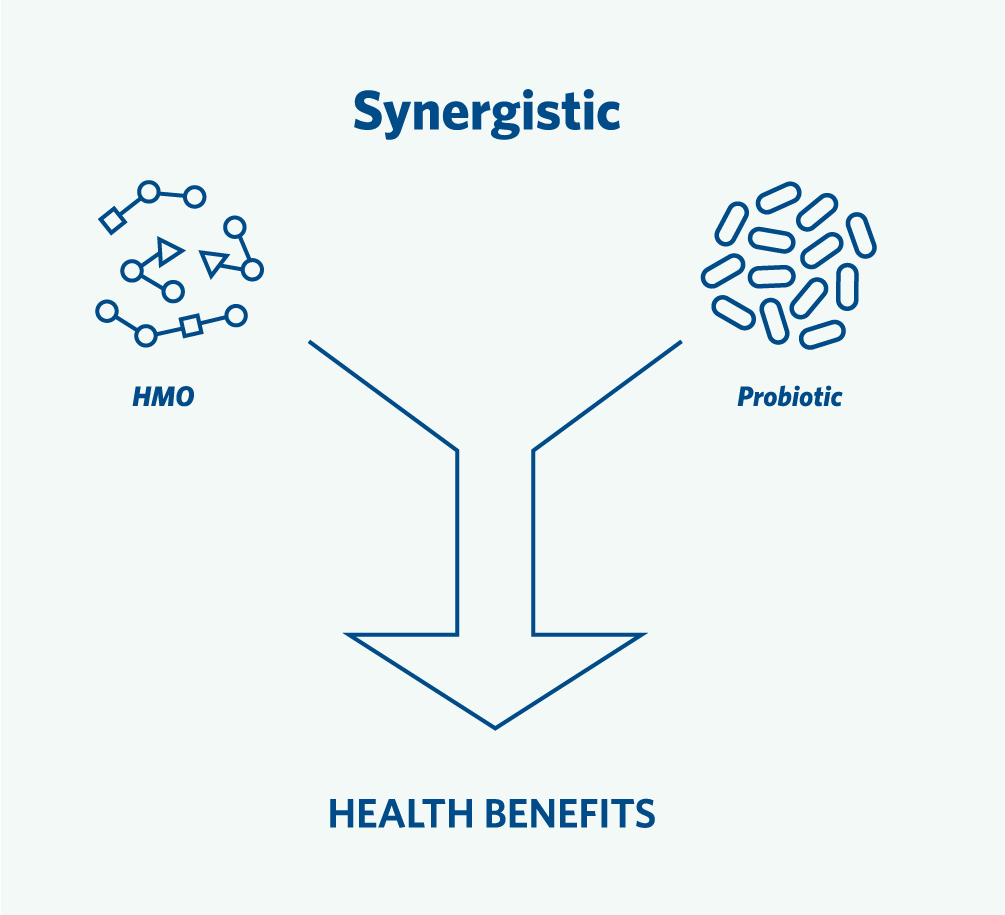The rapidly increasing knowledge of the intestinal microbiome composition and function provides us with an outstanding opportunity in identifying tailor-made synbiotic solutions with predictable effects on the microbiome and health.
With Chr. Hansen premium synbiotics you get the best of both worlds combining unique probiotics that have clinically documented health benefits with specific human milk oligosaccharides (HMOs) that may confer health benefits through multiple mechanisms. Chr. Hansen premium synbiotics give you the opportunity to take your product offering to the next level across health areas and life stages.
What are probiotics?
Probiotics are defined by the WHO/FAO as “live microorganisms which, when administered in adequate amounts, confer a health benefit on the host”. For as long as human beings have existed, we have been naturally ingesting living microorganisms as part of our diet. The probiotics we know of today have been isolated from sources such as plants, fermented foods, dairy, feces and intestinal biopsies. It is therefore safe to say that probiotics have been safely used for ages1.
As living microorganisms, bacteria need to eat. Both commensal bacteria and probiotics feed on prebiotics, which are dietary fibers that we humans cannot digest ourselves. While breastfeeding, infants ingest breast milk that contains a special type of short-chain fibers produced by the mother. These small prebiotics are the human milk oligosaccharides (HMOs), known to specifically feed the bacteria in the infants’ developing gut microbiome.
What are human milk oligosaccharides – HMOs?
HMOs are the third most abundant component of human breast milk showing how important these prebiotics are for the infant. Emerging evidence indicates several significant roles of HMOs such as supporting the immune system, gut integrity, and even brain development, and supporting the defense against unwanted microorganisms2. Most of the clinical studies conducted so far were done in infants, but a growing number of studies suggest that the beneficial effects of HMOs may also be transferred to adults.
Not long ago, HMOs were obtainable only from the original source – human breast milk. The recent development of highly specialized fermentation techniques has now enabled large-scale manufacturing of HMOs that are readily available for inclusion in infant formula and dietary supplements. Chr. Hansen has perfected this manufacturing process to produce HMOs at scale while maintaining impeccable purity and quality of the final product.
Synbiotics – combining probiotics and HMOs
Chr. Hansen Premium Synbiotics combine probiotic strains with HMOs into complementary and synergistic synbiotic concepts.
Why synbiotics with HMOs?
Bifidobacteria are core components of a healthy infant gut microbiome and growing evidence suggests that they also have beneficial effects throughout adult life. However, the abundance of bifidobacteria in the colon decreases to less than 5% in adults and even less in the elderly and individuals with certain health issues such as “leaky gut”4. Supplementation with conventional prebiotics such as fructooligosaccharides (FOS), galactooligosaccharides (GOS) and inulin will indeed feed commensal bifidobacteria but also many other types of bacteria. As such, there will be only a few if any prebiotic leftovers for the largely outnumbered bifidobacteria in the adult gut.
HMOs, on the other hand, are highly bifidogenic, meaning that they highly selectively feed bifidobacteria. With minimal competition from other types of bacteria, bifidobacteria will feed well on HMOs such as 2’-FL to increase in abundance and activity5.



